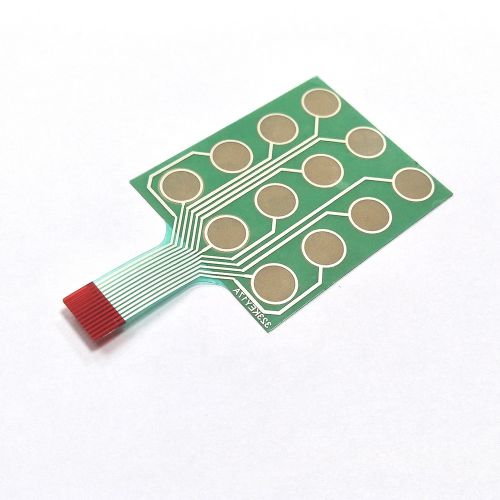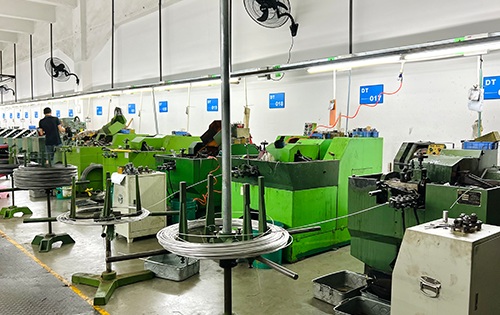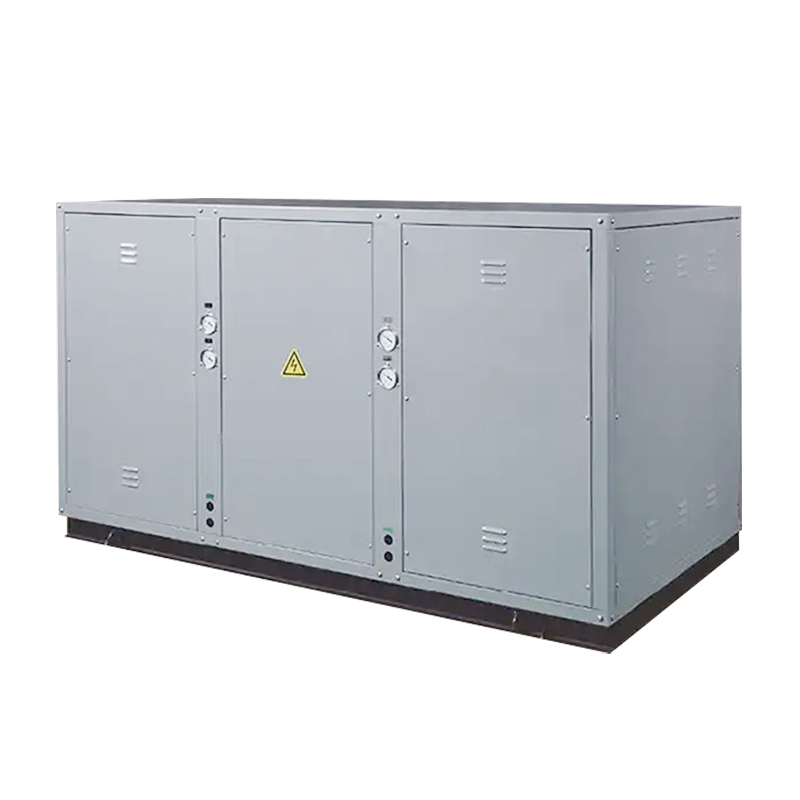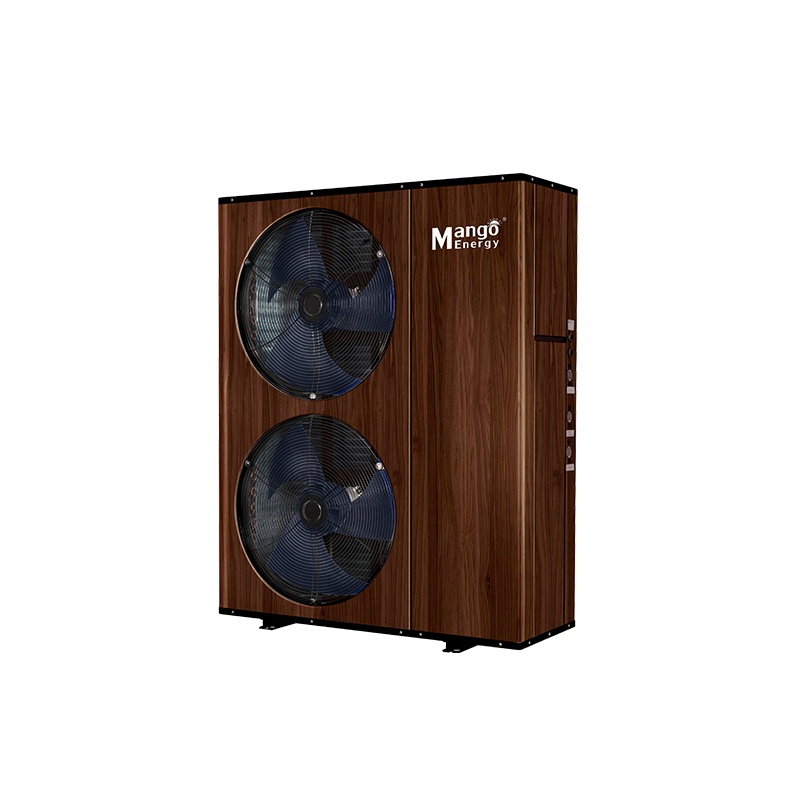£ºHowever, with the development of the industry, security screening machine It will also bring us more and more consumer experiences, so that users can really feel the upgrade and change. https://secuzoan.com/
Choosing the right touch sensor can significantly impact the performance and user experience of your device. Whether you’re designing a new product or upgrading an existing one, here’s a detailed guide from Singway to help you select the best touch sensor for your needs.At first, silicone rubber keyboard It developed out of control and gradually opened up a sky of its own. https://singway-touch.com/
touch sensor
1. Understand Touch Sensor Types
There are several types of touch sensors, each with unique characteristics:
Capacitive Touch Sensors: These sensors detect changes in capacitance caused by the touch of a finger. They are highly responsive and commonly used in smartphones and tablets. They offer excellent durability and can support multi-touch functionality.
Resistive Touch Sensors: These sensors consist of two conductive layers separated by a small gap. When pressure is applied, the layers touch each other, registering the input. They are versatile and work with any stylus or object, making them suitable for environments where users might wear gloves.
Infrared Touch Sensors: These use infrared light beams to detect touch. They are highly accurate and work in various lighting conditions. Infrared sensors are ideal for large displays or kiosks.
Surface Acoustic Wave (SAW) Sensors: These sensors use ultrasonic waves to detect touch. They provide high clarity and sensitivity, making them ideal for applications where image quality is crucial, like in high-resolution touch screens.
2. Consider Your Application
The choice of touch sensor depends heavily on your application:
Consumer Electronics: For devices like smartphones and tablets, capacitive sensors are often preferred due to their sensitivity and multi-touch capabilities.
Industrial Applications: In rugged environments, resistive sensors might be more suitable due to their durability and ability to work with various input devices.
Large Displays: For interactive kiosks or large touch screens, infrared and SAW sensors offer high accuracy and responsiveness.
3. Evaluate Sensor Size and Resolution
The size and resolution of the touch sensor should match your application¨s requirements:
Screen Size: Ensure the sensor can cover the entire screen area. Larger screens may require sensors with specific characteristics to maintain performance and accuracy.
Resolution: Higher resolution sensors offer more precise touch detection. This is crucial for applications requiring fine touch input, such as graphic design or detailed data entry.
4. Assess Environmental Factors
Consider the environmental conditions where the sensor will be used:
Temperature and Humidity: Ensure the sensor can operate effectively in the temperature and humidity ranges of your application environment. Some sensors are designed for extreme conditions and offer better performance in challenging environments.
Exposure to Contaminants: In environments where dust, liquids, or other contaminants are present, choose sensors with protective coatings or designs that prevent these issues from affecting performance.
5. Multi-Touch and Gestures
If your application requires advanced user interactions:
Multi-Touch Capability: Capacitive and SAW sensors are excellent for multi-touch applications, allowing for complex gestures and simultaneous inputs.
Gesture Recognition: Some touch sensors support gesture recognition, enabling users to perform specific actions with swipes, pinches, and other gestures.
6. Power Consumption
Consider the power requirements of the touch sensor:
Low Power Consumption: For battery-powered devices, choose sensors that consume minimal power to extend battery life without compromising performance.
7. Cost vs. Performance
Balancing cost and performance is crucial:
Budget Constraints: While high-end sensors offer superior performance, there are often cost-effective options that still meet the necessary requirements. Evaluate the performance-to-cost ratio to find a suitable sensor within your budget.
Philips head screws are a fundamental component in a wide range of construction and manufacturing projects. Known for their cross-shaped slots on the head, these screws are designed to be driven with a Philips screwdriver, which fits snugly into the recesses of the screw head. The design allows for more torque to be applied during installation compared to traditional flat-head screws, making them a preferred choice in various applications.Through bit by bit efforts, let 304 stainless steel screws Our market share is getting higher and higher, and the return on investment is also rising steadily. https://shwhardware.com
philips head screws
Key Uses and Benefits
1.Improved Torque and Grip: The cross-shaped design of Philips head screws allows for better torque distribution, reducing the likelihood of the screwdriver slipping out of the screw head during installation. This design is especially useful in situations requiring a secure and tight fit, such as in furniture assembly or electronic device manufacturing.
2.Versatility Across Materials: Philips head screws are used in multiple materials, including wood, metal, and plastic. This versatility makes them a go-to fastener in different industries, from automotive to home improvement.
3.Ease of Use: One of the most significant advantages of Philips head screws is their ease of use. The design ensures that the screwdriver remains centered on the screw head, reducing the risk of damaging the screw or the material it is being driven into. This makes Philips head screws particularly user-friendly for DIY enthusiasts and professionals alike.
4.Widely Available and Standardized: Philips head screws are standardized and widely available in various sizes and materials, ensuring that they can be used for a vast array of applications. Their standardization also means that replacement screws are easy to find, making repairs and adjustments straightforward.
philips head screws
Common Applications
Furniture Assembly: The reliable grip and torque of Philips head screws make them ideal for assembling furniture, where a secure fit is essential to ensure the stability and longevity of the pieces.
Electronic Devices: In electronics, where precision and security are paramount, Philips head screws are often used to assemble components, offering a secure fit without damaging delicate parts.
Automotive Industry: The automotive industry relies on Philips head screws for various applications, including securing panels, components, and interior fittings, where durability and reliability are crucial.
Philips head screws have become an indispensable tool in many industries due to their unique design and practical benefits. Their widespread use in construction, manufacturing, and everyday DIY projects speaks to their reliability and effectiveness as a fastener. Whether you’re building a piece of furniture, assembling an electronic device, or working on your car, Philips head screws provide the strength, grip, and ease of use you need to get the job done right.
£ºfrom baggage scanner machines From the reference value, it can also bring a lot of inspiration to other industries. https://secuzoan.com/
Geothermal heat pumps, also known as ground source heat pumps, are an efficient and sustainable solution for heating and cooling homes. They utilize the stable temperatures found underground to provide consistent and eco-friendly climate control. Let’s dive into how these systems work and why they are an excellent choice for both heating and air conditioning needs.Doing these simple things can also make heat pumps for sale Sowing high-quality genes will eventually grow into towering trees and become the leader in the industry. http://mangoenergyheatpump.com
What is a Geothermal Heat Pump?
A geothermal heat pump is a system that leverages the earth’s natural heat to provide heating, cooling, and often hot water for residential and commercial buildings. Unlike conventional HVAC systems that rely on outside air temperatures, geothermal systems use the relatively constant temperature of the ground as a heat source in winter and a heat sink in summer.
How Do Geothermal Heat Pumps Work?
1. Ground Loop System:
Closed-Loop Systems: These are the most common and involve a loop of piping buried in the ground or submerged in water. The loops can be installed horizontally, vertically, or in a pond/lake.
Open-Loop Systems: These systems use groundwater from a well or surface body, which is returned to the source after heat exchange.
2. Heat Exchange Process:
Heating Mode: During winter, the fluid in the ground loop absorbs heat from the earth. This heat is then transferred to the heat pump unit inside the building. The heat pump compresses the absorbed heat to a higher temperature and distributes it through the building’s ductwork or radiant heating system.
Cooling Mode: In the summer, the process is reversed. The heat pump extracts heat from the indoor air and transfers it to the cooler ground via the ground loop. This removes heat from the home and effectively cools it down.
3. Distribution System:
Once the heat is extracted from the ground and conditioned by the heat pump, it is distributed throughout the home via traditional ductwork or a radiant floor system.
Benefits of Geothermal Heat Pumps
1. Energy Efficiency:
Geothermal heat pumps are significantly more efficient than traditional heating and cooling systems. They can achieve efficiencies of 300-600%, meaning they can produce 3 to 6 units of heating or cooling for every unit of electricity consumed.
2. Environmental Impact:
By using renewable energy from the earth, geothermal systems reduce reliance on fossil fuels and decrease greenhouse gas emissions. They are a greener choice for sustainable living.
3. Cost Savings:
Although the initial installation cost of a geothermal heat pump can be higher, the system pays for itself over time through lower operating costs. Homeowners can save up to 70% on heating, cooling, and hot water bills.
4. Longevity and Durability:
Geothermal systems have fewer moving parts and are sheltered from outdoor elements, leading to longer lifespans. The underground loop systems often come with warranties of 50 years or more.
Baking enthusiasts and professional chefs alike understand the importance of precision and convenience in the kitchen. One innovative tool that has garnered attention is the silicone baking mat with a measuring function. This versatile kitchen accessory not only simplifies the baking process but also ensures accuracy and efficiency. In this article, we will explore the myriad benefits of silicone baking mats with measuring functions and why they are a must-have in every kitchen.This shows that, customized silicone mould It has a strong development pulse and is an indispensable source of power for the development of the industry. https://lxsiliconeparts.com/![]()
What is a Silicone Baking Mat with Measuring Function?
A silicone baking mat with a measuring function is a non-stick, reusable baking surface made from food-grade silicone. These mats are embedded with measurement markings, including rulers, circles for pie dough, and grids for even spacing. This added feature transforms a simple baking mat into a multifunctional tool, perfect for both novice and experienced bakers.
silicone baking mats
Benefits of Silicone Baking Mats with Measuring Function
1. Precision in Baking
The primary advantage of a silicone baking mat with measurement markings is the precision it offers. Whether you are rolling out dough, spacing cookies evenly, or measuring pie crusts, the built-in guides help achieve consistent results every time. This level of accuracy is particularly beneficial for delicate pastries and intricate baking projects.
2. Non-Stick Surface
Silicone baking mats are renowned for their non-stick properties. This eliminates the need for additional greasing or parchment paper, making the baking process cleaner and more eco-friendly. Foods release effortlessly from the surface, reducing the risk of broken or misshapen baked goods.
3. Reusable and Durable
Unlike disposable parchment paper or aluminum foil, silicone baking mats are reusable. They withstand high temperatures without warping or degrading, ensuring long-term use. This durability makes them a cost-effective investment for any kitchen.
4. Easy to Clean
Cleaning up after baking can be a chore, but silicone baking mats simplify this task. They are dishwasher safe and can also be easily wiped clean with soap and water. The non-porous surface resists stains and odors, maintaining the mat¨s pristine condition.
5. Versatility
Silicone baking mats with measuring functions are incredibly versatile. They can be used for baking cookies, rolling out dough, kneading bread, and even as a surface for candy-making. The measurement markings make these mats a practical tool for various culinary tasks beyond baking.
6. Heat Distribution
Silicone mats provide even heat distribution, ensuring that baked goods cook uniformly. This helps prevent burnt bottoms and unevenly cooked treats, resulting in perfect pastries and cookies every time.
Also known as touch keyboard, it adopts an integral sealed structure composed of a flat multi-layer combination. It is a new type of electronic component that integrates light, machine and electricity, and seals the key switch, panel, mark, symbol display and lining together. It is a fundamental change in the appearance structure of electronic products. It can replace the keys of conventional discrete components and perform the tasks of the operating system more reliably. Membrane switches have good waterproof, dustproof, oil-proof, and anti-corrosion of harmful gases. The performance is stable and reliable, light weight, small size, long life, easy assembly, the panel can be washed without damage to the characters, rich colors, and beautiful appearance. Using membrane switches makes your products more contemporary. Main types of membrane switches The membrane switch panel is an electronic component that integrates switch functions and decorative functions, consisting of a rigid or flexible printed circuit board as the base, with buttons with or without feel installed, and then covered with a plastic (polycarbonate PC, polyester PET, etc.) film panel printed with colorful decorative patterns. It is a new type of human-computer dialogue interface. The connection between its switch circuit and the whole machine can be completed by welding or plugging.Even so, membrane switch We must also adhere to the quality of the industry and create unique products for the company. https://singway-touch.com/
membrane switch types
Types of membrane switches
1. Flexible membrane switch
Flexible membrane switch is a typical form of membrane switch. This type of membrane switch is called flexible because the mask layer, isolation layer, and circuit layer of the membrane switch are all composed of flexible films of various properties. The circuit layer of the flexible membrane switch uses polyester film (PET) with good electrical properties as the carrier of the switch circuit pattern. This layer is also divided into hand-feel springs and upper and lower circuits. Due to the properties of polyester film, the membrane switch has good insulation, heat resistance, folding resistance and high resilience. The graphics of the switch circuit, including the switch connection and its lead wires, are printed with low-resistance, low-temperature cured conductive paint. Therefore, the composition of the entire membrane switch has a certain degree of softness, which is not only suitable for use on flat bodies, but also can be used with curved bodies. The lead wires of the flexible membrane switch are integrated with the switch body. When making the connection of the group switch, they are gathered at a certain place on the membrane and extended outward according to the position specified in the design and the standard line spacing. They are connected to the rear circuit of the whole machine as soft, arbitrarily bendable and sealed lead wires.
membrane switch types
2. Rigid membrane switch
Rigid membrane switch refers to a switch whose graphics and circuits are made on a common printed circuit copper-clad board. The characteristics of rigid membrane switch are convenient material acquisition, stable process, low resistance, and certain components in the circuit can be directly welded on its back. In the case of a small area, the rigid lining layer can be omitted. Rigid membrane switches generally use metal guides as the contact points for conducting the labyrinth, so they have a better feel. The disadvantage is that they are not as convenient to install in the whole machine as soft membrane switches, and often require welding and lead-out through flat cables. In addition to buzzer signals and LED indications, the information feedback of rigid membrane switches generally uses metal feel springs.
membrane switch types
3. Flat membrane switch
The buttons on the membrane switch use different colors to indicate the position, shape and size of the key body, which is more common in the initial stage of membrane switches. Three-dimensional membrane switch: Usually, the buttons on the membrane switch only use colors to express the position, shape and size of the key body. In this way, the accuracy of the operation can only be identified by the operator’s vision. Since there is no appropriate feedback information to indicate whether the finger is pressed within the effective range of the switch to make the switch operate, it affects the confidence in monitoring the entire machine and the speed of operation. A membrane switch that makes the switch key body slightly raised and slightly higher than the panel to form a three-dimensional shape is called a three-dimensional key switch. The three-dimensional key can not only accurately give the range of the key body, improve the recognition speed, and make the operator’s sense of touch more sensitive, but also enhance the decorative effect of the product appearance. The production of three-dimensional keys.
When it comes to fastening and securing materials in construction, manufacturing, or DIY projects, the type of screw head plays a crucial role in determining the strength, durability, and reliability of the connection. Among the various screw heads available, the strongest is often debated, but a few contenders consistently rise to the top.precisely because custom screw The rapid development of, so also brought new opportunities to the industry. https://shwhardware.com
1. Torx (Star) Head Screws
Torx head screws, also known as star head screws, are widely regarded as one of the strongest screw types. The design features a six-point star-shaped pattern that allows for better torque distribution. This means that when a driver is applied, the force is spread evenly across the screw head, reducing the likelihood of cam-out (slipping out of the screw head) and providing a more secure and durable fastening.
strongest screw head
Advantages of Torx Head Screws:
High Torque Tolerance: Can handle more torque without stripping.
Better Grip: The driver bit fits snugly, minimizing wear on the screw and tool.
Durability: Ideal for heavy-duty applications like construction, automotive, and machinery.
2. Hex Head Screws
Hex head screws, featuring a six-sided head, are another strong option, especially in industrial and construction settings. The larger surface area of the hex head allows for the application of greater torque, which makes them suitable for applications requiring a strong, secure hold.
Advantages of Hex Head Screws:
High Strength: Excellent for securing heavy materials.
Versatility: Commonly used in various applications, including wood, metal, and plastic.
Ease of Use: Can be tightened with a wrench, providing better control and leverage.
3. Phillips Head Screws
Phillips head screws, while not the strongest in terms of torque resistance, are still highly popular due to their widespread availability and ease of use. The cross-shaped design allows for self-centering, making them easier to drive in without slipping. However, they are more prone to cam-out than Torx or hex head screws, which can weaken the hold over time.
Advantages of Phillips Head Screws:
Ease of Use: Commonly available and easy to work with.
Self-Centering: Reduces the risk of the driver slipping.
Cost-Effective: Widely used in everyday applications.
4. Square (Robertson) Head Screws
Square head screws, also known as Robertson screws, offer a strong and secure hold with a design that prevents cam-out more effectively than Phillips head screws. The square shape allows for better torque application and is commonly used in North America.
Advantages of Square Head Screws:
Anti-Slip Design: Reduces cam-out.
Strong Hold: Ideal for woodwork and construction.
Ease of Use: Provides a secure fit with the driver bit.
5. Combination Heads
Some screws feature combination heads, such as a Phillips/Torx or Phillips/Robertson combo. These offer the benefits of both designs, providing versatility and strength in various applications.
Advantages of Combination Head Screws:
Versatility: Can be driven with different tools.
Improved Strength: Combines the benefits of both head types.
Conclusion
When selecting the strongest screw head, it¨s important to consider the specific application and the type of material you¨re working with. Torx head screws generally offer the best combination of strength, torque resistance, and durability, making them ideal for heavy-duty tasks. Hex head screws are also a strong contender, especially for applications that require significant torque. While Phillips head screws are more common and versatile, they may not be the best choice for tasks requiring maximum strength and resistance to cam-out.
For more information on high-quality screws and fasteners, check out SHW hardware, a leading supplier of durable and reliable hardware solutions.
£ºAs an important brand soul of the company, walk through metal detector Has outstanding performance, through the market test, still has a strong development trend. https://secuzoan.com/
Geothermal heat pumps, also known as ground source heat pumps, are an efficient and sustainable solution for heating and cooling homes. They utilize the stable temperatures found underground to provide consistent and eco-friendly climate control. Let’s dive into how these systems work and why they are an excellent choice for both heating and air conditioning needs.Mentioned in the article air source heat pump Born with strong vitality, you can turn a cocoon into a butterfly and become the best yourself after wind and rain. http://mangoenergyheatpump.com
What is a Geothermal Heat Pump?
A geothermal heat pump is a system that leverages the earth’s natural heat to provide heating, cooling, and often hot water for residential and commercial buildings. Unlike conventional HVAC systems that rely on outside air temperatures, geothermal systems use the relatively constant temperature of the ground as a heat source in winter and a heat sink in summer.
How Do Geothermal Heat Pumps Work?
1. Ground Loop System:
Closed-Loop Systems: These are the most common and involve a loop of piping buried in the ground or submerged in water. The loops can be installed horizontally, vertically, or in a pond/lake.
Open-Loop Systems: These systems use groundwater from a well or surface body, which is returned to the source after heat exchange.
2. Heat Exchange Process:
Heating Mode: During winter, the fluid in the ground loop absorbs heat from the earth. This heat is then transferred to the heat pump unit inside the building. The heat pump compresses the absorbed heat to a higher temperature and distributes it through the building’s ductwork or radiant heating system.
Cooling Mode: In the summer, the process is reversed. The heat pump extracts heat from the indoor air and transfers it to the cooler ground via the ground loop. This removes heat from the home and effectively cools it down.
3. Distribution System:
Once the heat is extracted from the ground and conditioned by the heat pump, it is distributed throughout the home via traditional ductwork or a radiant floor system.
Benefits of Geothermal Heat Pumps
1. Energy Efficiency:
Geothermal heat pumps are significantly more efficient than traditional heating and cooling systems. They can achieve efficiencies of 300-600%, meaning they can produce 3 to 6 units of heating or cooling for every unit of electricity consumed.
2. Environmental Impact:
By using renewable energy from the earth, geothermal systems reduce reliance on fossil fuels and decrease greenhouse gas emissions. They are a greener choice for sustainable living.
3. Cost Savings:
Although the initial installation cost of a geothermal heat pump can be higher, the system pays for itself over time through lower operating costs. Homeowners can save up to 70% on heating, cooling, and hot water bills.
4. Longevity and Durability:
Geothermal systems have fewer moving parts and are sheltered from outdoor elements, leading to longer lifespans. The underground loop systems often come with warranties of 50 years or more.